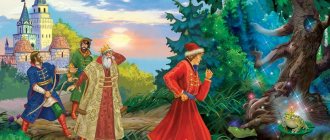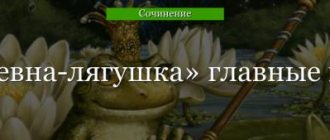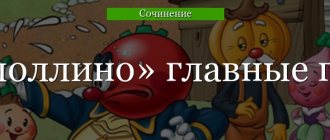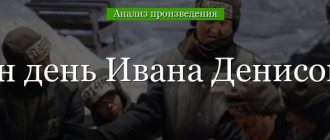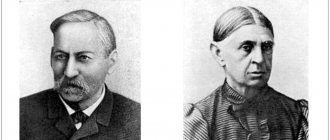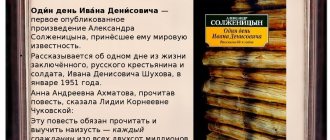History of creation
Russian folk tales about Ivan Tsarevich are usually built according to a certain template. The hero has older relatives - sisters and brothers who torment Ivan at the beginning of the tale, over whom the hero exalts himself in the finale. The Tsar-Father promises a son to some powerful otherworldly colleague (sea or underground king) or wizard even before Ivan’s birth. A fairy tale plot may describe how a hero flees from the domain of such a character.
Ivan Tsarevich and the Grey Wolf
The grown-up prince also goes on a journey to find some magical thing or animal (for example, the Firebird, which flies into the king’s garden and pecks rejuvenating apples there). Along the way, the hero meets an animal helper (for example, a gray wolf).
Ivan Tsarevich and the Firebird
The prince is able to save the magic horse, and it remains in the hero's service. The helper animal brings the dead hero back to life or kills the enemies of Ivan Tsarevich (for example, evil brothers). A number of fairy-tale plots are also connected with the search for his missing wife, who was kidnapped from Ivan Tsarevich by the evil immortal sorcerer Koschey. A typical assistant in the fight against Koshchei is the forest witch Baba Yaga.
Attitude towards parents
The characteristics of Ivan Tsarevich include features typical of that time. He is obedient and does not contradict his father. After the priest insists that he marry the frog, he agrees. Despite the absurdity of his situation, he did not dare to go against the opinion of his parent.
The older brothers laugh at Ivan, making fun of him that he will have to marry such an unusual wife. Undoubtedly, he is ashamed of his position, since he has a fairly high status - the son of the sovereign himself. Forced to marry a frog, our Ivan Tsarevich “hung his head.” The characterization of the hero is generally positive; he turned out to be strong in spirit.
Image and plot
The image of Ivan Tsarevich in Russian folk tales has a dual characteristic. Ivan Tsarevich appears as a positive character in those stories where he fights evil and helps the weak. At the same time, the hero himself may not know that he is the king’s son, and may have been lost in childhood.
At the beginning of the tale, the hero is pursued by enemies, Ivan is poor. The hero regains his royal dignity at the end of the tale. As a reward for his deeds, he receives the throne and finds his parents who lost him.
Ivan Tsarevich and the Frog Princess
If the hero begins his journey already as a prince, then at the end of the fairy tale Ivan will have a princess wife, half of someone else’s kingdom, a magic horse or a magic object as a reward.
In those stories where Tsarevich Ivan is contrasted with a hero “from the people,” for example, a fisherman’s son, the Tsarevich himself becomes a negative character. Here Ivan Tsarevich demonstrates malice and cunning, trying to take away from the good heroes the reward that they deserve, or even destroy them. In the finale, the prince remains alive, but is punished and disgraced.
Where it all began
Traditionally for Russian folklore, a fairy tale begins with the saying “In a certain kingdom...”.
The reader immediately plunges headlong into the life of a powerful sovereign. The ruler has three adult sons. He is already quite old and gives them the task of finding wives for themselves. And not just find it, but shoot arrows and try your luck. Where the arrow finds the betrothed, that is the one you need to marry. The characterization of Ivan Tsarevich from the fairy tale “The Frog Princess” will include the moment when his future wife turns out to be... a frog. Undoubtedly, he was taken aback and did not know what to do. After all, other brothers got worthy girls! A young man finds himself in a difficult situation.
Film adaptations
Ivan Tsarevich appeared once in films and many times in cartoons. The hero appeared in the Soviet cartoons “The Frog Princess” (1954 and 1971), and “Vasilisa the Beautiful” (1977). In the 1985 film fairy tale “After the Rain on Thursday,” the role of Ivan Tsarevich is played by actor Vladislav Toldykov.
Vladislav Toldykov as Ivan Tsarevich
In 2011, the first film from the series of cartoons “Ivan the Tsarevich and the Gray Wolf” was released by the animation film studio “Melnitsa”. Ivan starts here as a simple village guy.
- Brief summary of the fairy tale The Frog Princess for a reader's diary
The hero dreams of becoming a fireman, but by chance he turns out to be the “first person he meets”, to whom the angry Tsar Father, under the hot hand, decides to marry off his daughter, Princess Vasilisa, who has angered him. The heroes, declared bride and groom against their will, fall in love with each other, but they have many trials ahead.
In the second cartoon of the series, Ivan Tsarevich performs the functions of Minister of War and is closely occupied with state affairs, while the hero’s wife, Vasilisa, languishes from idleness.
Ivan Tsarevich in the cartoon by the Melnitsa studio
The heroes quarrel, and in order to reconcile them, the Tsar and the scientist cat decide to arrange a comic kidnapping of Vasilisa and involve the former villain, and now circus performer Chernomor, in this case. The kidnapping, however, quickly ceases to be a joke...
In the third cartoon of the series, the Tsar Father retires, and in the Far Away Kingdom, Ivan remains in charge along with the Gray Wolf. The optional hero goes with Vasilisa on a honeymoon on a magic carpet, leaving the kingdom at the mercy of the Scarecrow, who comes to life and establishes his own order in the kingdom...
There is no exact information yet about when the fourth part of the cartoon will be released. In the cartoons of the Melnitsa animation studio, the hand-drawn Ivan Tsarevich is voiced by actor Nikita Efremov.
Ivan Tsarevich in the cartoon “How to Catch the Firebird’s Feather”
In 2013, the Ukrainian cartoon “How to Catch the Firebird’s Feather” was released, where Ivan Tsarevich goes to look for the Firebird, obeying the will of his father, Tsar Berendey. The cartoon combines classic elements of Russian folk tales with modern humor and rock music.
First test
No sooner have they started to enjoy their new family life than the father comes up with a new task. He decides to test what the royal daughters-in-law are capable of. The first thing that interests the Tsar-Father is how his sons’ wives know how to bake bread. This product in Rus' was considered the most important thing on the table, and every girl should have known how to do it from childhood. The eldest sons bowed with honor and went to inform their wives about their father's test. The characterization of Ivan Tsarevich from the fairy tale “The Frog Princess” should be supplemented by the fact that he could not find a place for himself out of sadness. The youngest son knew that he would again disgrace himself in front of his brothers.
Could he have expected that his wife would calm him down and put him to bed, while she herself would begin to work miracles! She turned into a beautiful girl, Vasilisa the Wise. I started baking a loaf, such a loaf that it’s hard to imagine. The dough is white, soft, and it itself is decorated with swans.
The next morning our Ivanushka woke up and couldn’t believe that his frog had baked such wonderful bread. He was delighted, took the dish and took it to his father. The king began to accept the work of his daughters-in-law. The eldest's loaf burned; his sovereign ordered him to eat only in times of great famine. The middle one came out oblique and crooked. My father would only give this kind of bread to dogs. And when he saw Ivan’s loaf, he said that it should only be served on the festive table.
The characterization of Ivan Tsarevich changes: now he is not sad, but feels like a winner in front of his brothers.
Interesting Facts
- Ivan Tsarevich, like other characters of Russian folklore, has inspired artists more than once. The character was especially loved by Viktor Vasnetsov, a master of folklore painting (the paintings “The Fight of Ivan Tsarevich with the Serpent”, “Ivan Tsarevich on the Gray Wolf”). Also famous is the painting “Ivan the Tsarevich and the Frog,” painted by Ivan Bilibin, an artist of the late 19th and first half of the 20th centuries.
- In 1975, the Filmstrip studio released a color filmstrip based on the fairy tale “Ivan the Tsarevich and the Gray Wolf,” created by the artist P. Bagin.
Painting by Vasnetsov “Ivan Tsarevich on the Gray Wolf”
- The name of Ivan Tsarevich was adopted by a Russian folk metal band founded in 1999. The group works at the intersection of heavy metal and folklore and epic motifs. Released three studio albums. The band's famous song is "Live Metal".
- Among the characters of the science fiction writer Kir Bulychev, the creator of the series of books about Alice Selezneva, there is a certain citizen named Ivan Ivanovich Tsarevich.
Ivan Tsarevich in the game “Vasilisa’s Wedding”
- Ivan Tsarevich became a character in the “girls’” computer game “Vasilisa’s Wedding”. The game is based on cartoons from the Melnitsa studio. In the game, Vasilisa chooses a dress and prepares in every possible way for her own wedding, for which she needs to decorate the chambers, bake a cake, send out invitations, and so on.
- In 2012, the publishing house Egmont Russia Ltd published the children's book Ivan Tsarevich and the Gray Wolf. In the Far Far Away Kingdom” by Sergei Georgiev.
Performance “Ivan Tsarevich, the Gray Wolf and Others”
- The Moscow Taganka Actors' Theater, under the direction of Nikolai Gubenko, staged a fairy-tale play for children “Ivan Tsarevich, the Gray Wolf and Others” with original costumes. For example, Koschey in the production wears the uniform of a German officer from the Second World War.
- In 2012-2015, craftsmen from the Ural stone-cutting workshop “Svyatogor” produced a series of extremely skillfully crafted jewelry figurines made from ornamental stone, petrified wood and metal. The figurines depict characters from Russian folk tales. Among them there is one depicting Tsarevich Ivan riding a gray wolf, who is rushing away from the chase along with the kidnapped Elena the Beautiful.
Second test
But the Tsar-Father does not rest on this. He asks to show how his daughters-in-law weave carpets. And again the youngest son is sad. The characterization of Ivan Tsarevich will be supplemented by a new fact: he is distrustful of his wife, who has already helped him out once. And again the frog calms her husband, puts him to bed and weaves a wonderful carpet. The older daughters-in-law called the servants to help, because they understood that they themselves were not able to cope with this task. And again the father takes the job. The older one has a carpet that is only suitable for horses. For the average one, it will do just to lay it in front of the gate. And again Ivan distinguished himself: his wife did the best job. The king is pleased and orders this carpet to be laid on holidays.
Quotes
“I take care of her from all sorts of troubles. Live, be happy and have children! But no, give her reforms! And the reforms deteriorate the nerves and the skin of the face. And what kind of mother are you after this, if you’re all tired and ugly from work?”
"You're already here? Well done! And he said: “Why training, why training?”
"It is not right! They’ll crowd in, trample, and there won’t be a crowd!”
Ivan Tsarevich is the youngest and obedient son of the Tsar. The image of Ivan Tsarevich is dominated by the qualities of an ideal fairy-tale hero: he is young, good-looking, courageous, decisive, active, kind and honest, brave, strong, courageous, observant.
The word of the Tsar-Father is law for Ivan Tsarevich. In the fairy tale, Ivan Tsarevich makes mistakes, commits wrong actions, but always corrects his mistakes and atones for his guilt.
In difficult times, Ivan Tsarevich meets a magical assistant - a gray wolf, who helps the hero get not only the Firebird, but also a magical horse and a beautiful bride. Ivan Tsarevich goes through a series of trials, accomplishes feats, risks his life before achieving his desired goal and happiness.
- “The Frog Princess” - a summary and retelling of a Russian folk tale
Copying information from the site greednews.su is permitted only when using an active hyperlink to the news, thank you for appreciating our copyrights!
Share link:
More interesting articles:
What is Zoom?
Rate this article:
The description of Ivan Tsarevich from “The Frog Princess” will help you understand what kind of appearance the hero had and what character traits he had.
The main characters of the tale
Main characters:
- Ivan Tsarevich is a kind, brave, courageous prince who knows how to keep his word.
- The gray wolf is a brave, positive character who fights evil, helping the offended or weak. He is fearless and protects Ivan from all the dangers that stand in his way.
Other characters:
- Tsar Berendey is the father of three sons, who decided to test their wives.
- The eldest sons are the elder brothers of Ivan Tsarevich, liars, drunkards and bandits, they promised their father three boxes, and they themselves went to the local tavern to drink away their father’s wealth.
- Koschey the Immortal is a powerful sorcerer who was defeated by Ivan Tsarevich.
- Elena the Beautiful is Ivan’s beautiful bride.
The main character of Russian folklore
Many people are interested in the question: who and when invented Ivan Tsarevich? Oddly enough, the character is relatively young, since he firmly entered into epics and legends only at the end of the 18th century. Invented by the people themselves, he became their personification, symbol. The prototype is the most ordinary village Vanya-Ivan, from whom the folklore character took both positive and negative character traits. Usually he is always the third son of the father-king, in some stories the character has three sisters, performs three tasks, and goes into battle against evil forces three times. The threefold repetitions in the fairy tales “Ivan Tsarevich and the Gray Wolf”, “The Frog Princess” and others are not accidental. Among the Slavs, three was a sacred number, symbolizing development, movement, beginning, origins, harmony. In folklore stories, it indicates that there is no need to give up if something doesn’t work out the first time: God, as you know, loves a trinity. Instead, you need to move forward, not give up, not lose heart.
"The Tale of Rejuvenating Apples and Living Water"
The plot of a magical story is typical. "The Tale of Ivan Tsarevich and the Gray Wolf" is very similar to this story. It also has a king and three sons who are trying their best to please their father. Father, being in old age, decided to regain his youth and gain immortality. To achieve his goal, he needed rejuvenating apples and living water. And who did he send after them to the distant kingdom? Of course, heirs. At first, the elder brother Fyodor went in search, but he managed to be captured by a cunning and crafty girl. Then the middle son, Vasily, decided to try his luck, but suffered the same fate. There was no hope for the youngest, a true fool from birth. But the priest had no choice but to entrust Ivan with a similar task.
The prince at the crossroads intuitively made the right choice, so Baba Yaga helps him reach the magical garden under the protection of Sineglazka. Then Ivan picked some apples, poured water and went home. Sineglazka caught up with him, but instead of punishment for the theft, the prince received her forgiveness and love in addition. On the way, he freed the brothers, but they betrayed the prince. All his merits were appropriated by cunning relatives. But Nagai Bird, Sineglazka’s faithful friend, freed him from the abyss and helped bring justice. Ivan married Sineglazka and lived happily in her kingdom. The main idea of “The Tale of Rejuvenating Apples...” is that betrayal does not lead to anything good. Youth cannot be eternal; it is impossible to achieve immortality. The main thing is to live the measured years honestly and nobly. And for selfishness, everyone will get what they deserve.
Ivan and his princesses
Let's first draw up a conditional outline of the fairy tale. At first, Tsarevich Ivan lives - he doesn’t grieve, he lies on the stove. Then events develop depending on the problem that has arisen, for example: Koshchei’s threat, the kidnapping of the bride, the order of the father-tsar. The climax is a fight with evil spirits. And the story ends with the triumph of goodness and Ivan himself. The plot is almost always the same, but the main character may be different.
Depending on his character traits, the hero also receives a bride:
Female images complement the main character, “saturating” him with those qualities, the absence of which he sins. Thanks to this, harmony is created in the fairy tale: in its plot and in the relationships between the characters.
Where it all began
Traditionally for Russian folklore, a fairy tale begins with the saying “In a certain kingdom...”.
The reader immediately plunges headlong into the life of a powerful sovereign. The ruler has three adult sons. He is already quite old and gives them the task of finding wives for themselves. And not just find it, but shoot arrows and try your luck. Where the arrow finds the betrothed, that is the one you need to marry. The characterization of Ivan Tsarevich from the fairy tale “The Frog Princess” will include the moment when his future wife turns out to be... a frog. Undoubtedly, he was taken aback and did not know what to do. After all, other brothers got worthy girls! A young man finds himself in a difficult situation.
Attitude towards parents
The characteristics of Ivan Tsarevich include features typical of that time. He is obedient and does not contradict his father. After the priest insists that he marry the frog, he agrees. Despite the absurdity of his situation, he did not dare to go against the opinion of his parent.
The older brothers laugh at Ivan, making fun of him that he will have to marry such an unusual wife. Undoubtedly, he is ashamed of his position, since he has a fairly high status - the son of the sovereign himself. Forced to marry a frog, our Ivan Tsarevich “hung his head.” The characterization of the hero is generally positive; he turned out to be strong in spirit.
Second test
But the Tsar-Father does not rest on this. He asks to show how his daughters-in-law weave carpets. And again the youngest son is sad. The characterization of Ivan Tsarevich will be supplemented by a new fact: he is distrustful of his wife, who has already helped him out once. And again the frog calms her husband, puts him to bed and weaves a wonderful carpet. The older daughters-in-law called the servants to help, because they understood that they themselves were not able to cope with this task. And again the father takes the job. The older one has a carpet that is only suitable for horses. For the average one, it will do just to lay it in front of the gate. And again Ivan distinguished himself: his wife did the best job. The king is pleased and orders this carpet to be laid on holidays.
Who is this
Ivan Tsarevich has been around as a beloved hero since the mid-eighteenth century. Fairy tales with this character are numerous and were written by different authors. Of course, I want to learn more about him and figure out which side he belongs to - dark or light.
To understand this, let's analyze the fairy tales where our hero meets, trace his evolution and draw conclusions. First, let's describe Ivan Tsarevich. He always appears before us in the same guise: a young, fair-haired and very brave young man. Often our character is subject to reincarnation, he is helped by amazing servants, fairy tales with his participation are always full of various trials and adventures. In addition, the hero always has a difficult life. He is forced to go on adventures full of danger in order to fulfill someone's instructions or simply because he was kicked out of his home for some offense.
Looking at the description of Ivan Tsarevich, what he was like externally, little information can be found, but the internal qualities of the hero are expressed in all their glory.
First test
No sooner have they started to enjoy their new family life than the father comes up with a new task. He decides to test what the royal daughters-in-law are capable of. The first thing that interests the Tsar-Father is how his sons’ wives know how to bake bread. This product in Rus' was considered the most important thing on the table, and every girl should have known how to do it from childhood. The eldest sons bowed with honor and went to inform their wives about their father's test. The characterization of Ivan Tsarevich from the fairy tale “The Frog Princess” should be supplemented by the fact that he could not find a place for himself out of sadness. The youngest son knew that he would again disgrace himself in front of his brothers.
Could he have expected that his wife would calm him down and put him to bed, while she herself would begin to work miracles! She turned into a beautiful girl, Vasilisa the Wise. I started baking a loaf, such a loaf that it’s hard to imagine. The dough is white, soft, and it itself is decorated with swans.
The next morning our Ivanushka woke up and couldn’t believe that his frog had baked such wonderful bread. He was delighted, took the dish and took it to his father. The king began to accept the work of his daughters-in-law. The eldest's loaf burned; his sovereign ordered him to eat only in times of great famine. The middle one came out oblique and crooked. My father would only give this kind of bread to dogs. And when he saw Ivan’s loaf, he said that it should only be served on the festive table.
The characterization of Ivan Tsarevich changes: now he is not sad, but feels like a winner in front of his brothers.
"Ivan Tsarevich and the Grey Wolf"
Who the main characters of this story are becomes clear just from the title itself. The talking wolf is one of the central characters, which makes this fairy tale not only magical, but also partly “zoological.” The story tells about one family, where there is a king and his three sons. The heirs constantly compete not only for their father’s love, but also for the right to receive the throne and wealth after his death. To this end, fulfilling the instructions of their parent, they try to catch the Firebird, which has become a habit in their garden. Unable to catch the feathered beauty on the spot, they went in search of her. The youngest, Ivan, meets the Gray Wolf, who eats his horse. At the same time, the animal begins to serve the prince, carrying out his instructions: first he turns into the Firebird, then into a golden-maned horse and Helen the Beautiful. By the way, the restless priest also ordered the latter to be presented. Unfortunately, the envious brothers betray Ivan, taking away the princess and the Firebird from him. But the wolf comes to the rescue without the slightest delay - everything falls into place.
The fairy tale “Tsarevich Ivan and the Gray Wolf” is one of the most famous in Russia. Cartoons and films were made based on it, and performances were staged. Even paintings were drawn: for example, Vasnetsov’s masterpiece under the same name. The main character - the wolf - is shown here from the positive side: he is loyal, honest and noble. But the brothers, even though they are of royal blood, are depicted as negative characters: insidious, envious. Not wanting to be considered losers in front of their father, they even resorted to betrayal. The fairy tale teaches readers one simple truth: evil generates the same negativity, but good always returns a hundredfold. In addition, not everything in life is achieved through perseverance and hard work: sometimes you need to use cunning and ingenuity.
Ivan Tsarevich and the gray wolf, characteristics of the heroes.
TECHNOLOGICAL MAP OF A LITERARY READING LESSON
Lesson topic:
Russian folk tale “Ivan Tsarevich and the Gray Wolf”, characteristics of the heroes.
Lesson type:
Lesson on generalization and systematization of knowledge
The purpose of the lesson:
Summarize the knowledge of the completed work.
Didactic:
continue your acquaintance with the Russian folk tale “Ivan Tsarevich and the Gray Wolf”
Educational:
develop memory, attention, thinking, coherent speech; develop cognitive interest; develop expressive reading skills.
Educational:
cultivate a careful attitude to the word; cultivate a respectful attitude towards Russian folk works; cultivate a love of reading.
CHARACTERISTICS OF LESSON STEPS
Methods and techniques of work
Planning control, assessment, self-assessment, peer assessment
interactive equipment on every
Motivation for educational activities (1-2 min.).
Educational objectives of the lesson stage:
1) create conditions for the emergence of an internal need for inclusion in educational activities (“I want”); 2) determine the content framework of the lesson (“I can”).
- Hello guys. My name is Daria Alexandrovna, today I will give you a literary reading lesson.
— Look at the illustrations. How do you think,
what qualities does the first/second one have?
schoolboy? Which one would you like to be
- I hope you will show the same in today’s lesson.
qualities that a good student possesses.
They perceive and express their attitude towards the educational process.
Characterize schoolchildren (good and bad)
.
Characteristics of heroes
To retell the plot, you need to carefully read the fairy tale and decide which characters are described in the work. There are few characters in it. The main fairy-tale characters include:
In the fairy tale, the main character is brave and reasonable, as he goes in search of an amazing bird, where he must show courage and heroism. Ivan is the youngest son of the Tsar. The Gray Wolf turns out to be a faithful assistant who protects the main character from dangers. There are other characters in the work:
Ivan's father, Tsar Demyan Danilovich, was very powerful. This ruler had three sons. The elders turned out to be mean and envious. The youngest son Ivan went through many dangers and was not even afraid of meeting the evil wizard Koshchei, and then he married the kind and beautiful princess Elena the Beautiful.
"The Sea King and Vasilisa the Wise"
The Russian folk tale “Ivan Tsarevich and the Gray Wolf,” as well as other magical stories, tell us that the line between good and evil is very thin. These two forces always interact and feed each other. Without light there are no shadows, but the latter add zest to mundane life. Therefore, the story “The Sea King and Vasilisa the Wise” also carries this idea throughout the entire plot. It tells about a priest who was captured by the water lord. Inadvertently, he promises to give away something he doesn’t know at home. As luck would have it, this is a little son born in his absence. Over time, a little older Ivan goes to the Sea King, but on the way he meets an old woman who tells him how to earn the favor of the monster’s youngest daughter and thereby save himself from death.
Having fallen under the water, the prince bravely passes the test - he is helped in this by a young princess, who later becomes his wife. The young people successfully escape from the depths of the sea to their homeland with Ivan, where they remain to live happily and richly. What does a fairy tale teach? Ivan Tsarevich at first answers the old woman rudely, then corrects himself and receives valuable advice. The first thing that history conveys to us is to respect your elders, their wisdom and life experience will help in any difficult situations. The second thing the fairy tale teaches is to love and appreciate your land. Having received everything you dream of in a foreign land, you will still soon yearn for your native place. There is nothing more valuable than the Fatherland and your own family.
